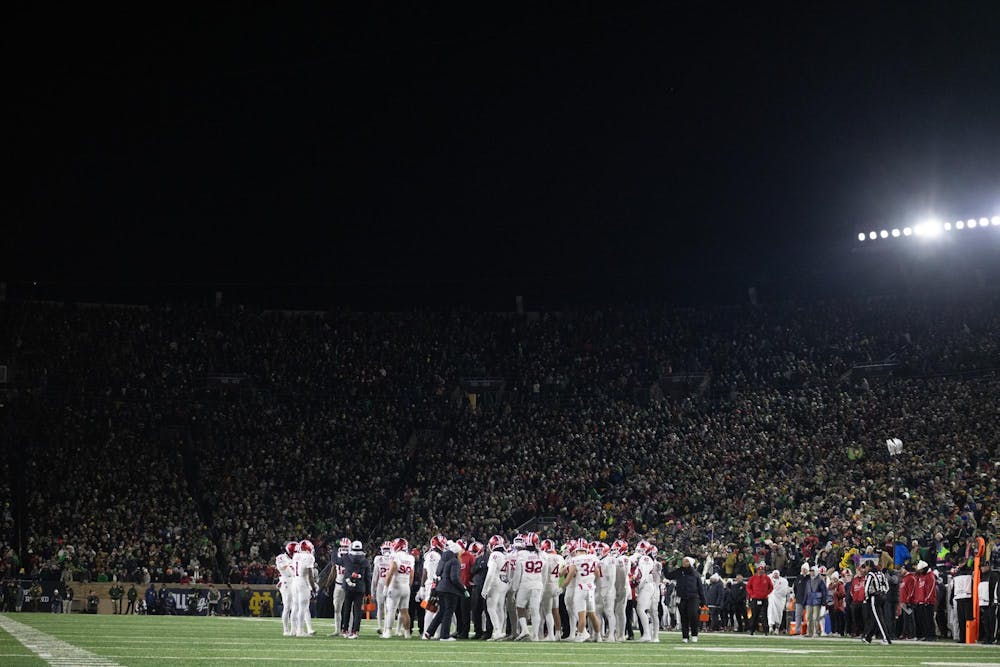The 2025 College Football Playoff National Championship between Ohio State and the University of Notre Dame averaged 22.1 million viewers, making it the most-watched non-NFL sporting event of the year. Despite the strong numbers, the game still saw a decline from last year’s Michigan-Washington matchup, which brought in 25 million viewers.
The downward trend in CFP views was evident throughout the new 12-team playoff format, with the semifinals experiencing a 17% drop compared to the previous year. As college football continues to navigate an evolving media landscape, questions arise about what contributed to the decline and how the CFP can adjust to maintain its audience.
Factors behind the viewership dip
One of the biggest changes in this year’s CFP was the expanded 12-team format, which led to schedule shifts that may have impacted viewership. The New Year’s Six Bowl games, traditionally held on New Year’s Day — a day synonymous with college football — were pushed back further into January. The shift away from this long-standing tradition could have made it more difficult for casual fans to stay engaged throughout the extended postseason.
The championship game took place on Jan. 20, Martin Luther King Jr. Day, a Monday night later in the month than usual, when many potential viewers had work or school the following day, possibly leading to lower late-night viewership numbers.
The game also aired on the same day as the presidential inauguration, an event that dominated news coverage throughout the day and night. The ceremony itself was held earlier, but the surrounding festivities, commentary and executive orders taken by the president continued to be covered across multiple networks. With so much media attention focused on the inauguration, some potential viewers may have opted to watch political coverage instead.
Another factor was the level of competition in the championship. Ohio State was favored by 8.5 points over Notre Dame, and some fans may have assumed the game would not be close. While the game peaked at 26 million viewers early in the evening, interest could have dropped as Ohio State maintained control for much of the night.
In the past, title games with less competitive matchups have seen lower ratings, such as University of Georgia’s dominant win over Texas Christian University two years ago, which remains the least-watched championship of the modern college football playoff era with 17.2 million viewers.
Competition from other major sporting events played a role as well. The expanded CFP format meant that some playoff games competed directly with the NFL, a league that dominates television ratings. The CFP semifinals, for example, faced tough competition from marquee NFL games, which likely drew away casual sports fans who may have otherwise tuned in.
Potential solutions to boost future viewership
There are already some changes in place that could help improve ratings moving forward. Starting in the 2026-27 season, the CFP National Championship will air on ABC in addition to ESPN.
This move will make the game available to a broader audience, as network television reaches more households than cable. Given that ESPN is now in approximately 65 million homes — down from over 90 million a decade ago — adding a network broadcast could help mitigate further declines in viewership.
Additionally, reconsidering the playoff schedule could help retain more viewers. The return of marquee games to New Year’s Day would reestablish a familiar tradition for fans, potentially improving engagement throughout the postseason.
Adjusting the timing of early-round games to avoid direct competition with the NFL could also allow the CFP to maximize its audience without going head-to-head with the most dominant league in American sports.
Another possible adjustment is shortening the gap between the semifinals and the championship game. The extended layoff between rounds may contribute to a loss of momentum and viewer interest. A more condensed schedule could keep the excitement high and maintain fan engagement throughout the entire playoff.
Looking ahead
Despite the drop in viewership, the CFP National Championship remains one of the biggest sporting events of the year, with millions of fans tuning in. However, with changing viewer habits and increasing competition, the CFP must continue to evolve to maintain its stronghold in the sports landscape.
By making strategic scheduling decisions, expanding television accessibility and ensuring the best possible matchups, the playoff can work to reverse recent declines and keep college football’s biggest game as must-watch television for years to come.






